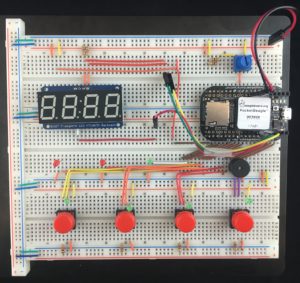
Greg Sheridan
Marketing Manager
Posted on February, 2, 2018
Categories
Recent Posts
- Octavo Systems Unveils the OSD32MP2 Series: Revolutionizing System Design in the Electronics Industry April 9, 2024
- Securing the Future: The Integral Role of SiP Technology in Thwarting Physical Attack Vectors in Embedded Systems March 12, 2024
- Developing Secure Embedded Systems: Best Practices and Strategies March 12, 2024
- Heterogeneous Integration (HI) and System-in-Package (SiP) Technology: A Comprehensive Overview February 20, 2024
- Understanding The Differences Between System-on-Chip (SoC), Package-on-Package (PoP), System-on-Module (SoM), and System-in-Package (SiP) January 17, 2024
Don’t Get Stuck Doing the Same Design Tasks Over and Over Again. Use SiPs!

It is Feb 2nd, Groundhog day. Each year I like to watch the 1993 classic Groundhog Day with Bill Murray and Andie MacDowell. In it, Murray gets stuck reliving the same day over and over again until he finally “gets it right”. The movie will make you laugh and cry. I highly recommend it.
However, this isn’t meant to be a movie review. I bring it up because I see parallels between Murray’s problem, reliving the same day over again, and a common complaint we hear from our customers. No matter how hard they try they always seem to be stuck having to redo the same design tasks over and over again!
Stuck in a loop

Most projects do not start from scratch. Typically, there is some commonality with another project the designer has done in the past. For example, most building automation systems are required to run Embedded Linux, therefore it is going to require a Processor, Memory, and some Power. Well, the last system the designer created required a Processor, Memory, and Power as well. Ideally, they would just copy these portions of the design from the previous system and use it in the new one. This would allow the designer to focus on the new features of the system and not redo work already done.
Unfortunately, this “Copy and Paste” approach to design reuse very rarely works out. Most of the time the requirements for the new system will be different enough from the previous design that the common components will still need to be tweaked. This is especially true for layout. Slight changes in the form factor, or power source, or features can cause a complete layout change even though the functionality of the common components doesn’t change. So now they are back redoing the same design again and again. Groundhog day!
Breaking the loop
How can this problem be solved? Through abstraction. Take software development for an example. In software development commonly reused functions are put away into different packages (libraries and modules) that can be called from any new program. This allows these common functions to be used in any new project without needing to be changed.
Why hasn’t this same approach been used in hardware design? Simply, there hasn’t been a good way to package a complete common system in a completely reusable package. Well there is now!
Octavo’s System-In-Package solutions do exactly this. SiPs provide abstracted reusable common system blocks in an easy to use package. The common design packaged in the SiP never has to be done again.
Take the OSD335x Family of SiPs for example. They incorporate an ARM A8 processor, DDR3 memory, and a power supply all in an easy to use package, abstracting the common components of an Embedded Linux system away from the system design. This means the designer never has to spend time on DDR interface layouts or figuring out complex Power Sequencing again. They can spend their time on the parts of the system that are new and differentiate this project from the thousands of other Embedded Linux Systems out there.
So if you feel like you are stuck doing the same design over and over again maybe it is time to look at a SiP
to get you out of your own personal Groundhog Day.
Editors note: Similar to Groundhogs, moles are ground creatures that pop up expectantly. The term “Whac-a-mole” (or “Whack-a-mole”) is often used colloquially to denote a repetitious and futile task. We developed a fun game as a reminder that you can eliminate repetitious and tedious layout tasks that add no value to your design, using an Octavo SiP.

